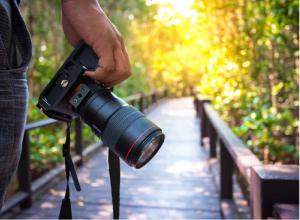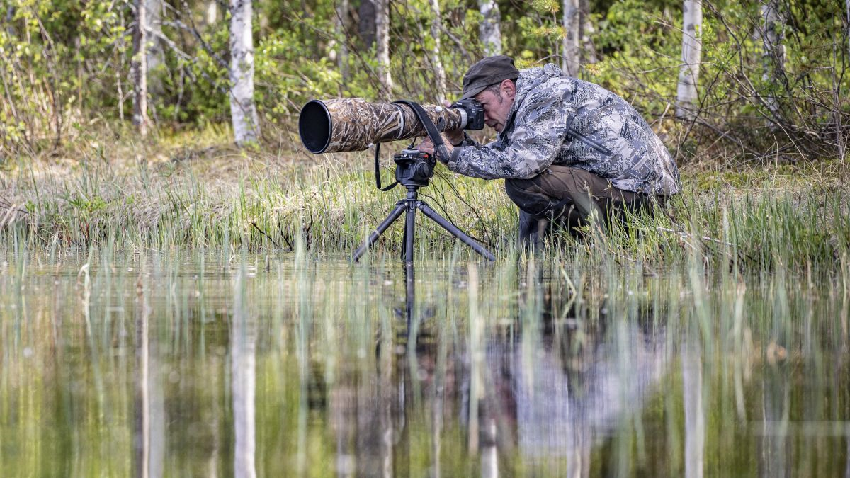When choosing the best camera for wildlife photography, there are a number of things to consider. That’s where this guide comes in. Not only have we selected some of the best wildlife cameras for all budgets and experience levels, but you’ll also be able to familiarize yourself with the specs and features you’ll need to get the shots you want.
We divided our selection of the best wildlife cameras into four categories for different types of users. You can use our navigation links on the left to go directly to the section that interests you while you can read on to discover the key criteria to consider when looking for your next wildlife camera.
A good burst mode
While it may depend a bit on the subject, in general, a fast burst speed is highly desirable for wildlife photography. The ability to fire a series of shots in quick succession will help you capture the split-second moment that is the difference between a winning shot and something forgettable.
Decent damping depth
The camera’s buffer depth goes hand in hand with a fast burst mode. This is the number of continuous shots your camera can take before you need to pause. The better the buffer, the more shots you can capture in a single burst. However, other factors come into play: a camera will often be able to record many more JPEGs.web files than raw files, for example, while the write speed of the memory card also plays a key role here.
Fast and efficient autofocus
Autofocus performance is another key area to consider. Not only do you want decent coverage across the frame, but you’re looking for cameras with a sophisticated AF tracking system and the ability to acquire focus in low light.
Range of lenses
The best wildlife shots often have the subject filling the frame. Many bridge cameras have huge zoom lenses built in to help with this, while those considering a more advanced DSLR or mirrorless camera will also need to consider the range of telephoto lenses available to them. While established DSLR systems have extensive lens support to suit a variety of budgets, this isn’t always the case with the newer mirrorless systems out there (although this is changing all the time).
With all this in mind, let’s take a look at our roundup of the best cameras for wildlife photography…
The best camera for wildlife photography
Wildlife cameras for beginners

Nikon Coolpix P950
It stands out for its colossal zoom range and lens quality, but the results could be better
Type: Compact | Sensor: 1 / 2.3 inches | Megapixels: 16MP | Lens: 24-2000mm f/2.8-6.5 | AF Points: Contrast Detection | Burst Rate: 7fps | Buffer: Not Specified | Weight: 1005g
- Wide zoom range
- Fully articulated screen
- No touchscreen
- Disappointing image quality
That’s not a typo. The Coolpix P950 actually packs an amazing 83x optical zoom lens that goes up to an incredible 2000mm. You’ll certainly have no trouble even filling the frame with distant subjects, but if that’s still not enough then there’s the Nikon Coolpix P1000 with a 125x zoom that goes out to 3000mm. However, the P950 is not without compromises. It’s quite heavy for a bridge camera, while the image quality could be better. It’s also a shame there’s no touchscreen, but otherwise, if zoom is your main concern, the P950 is the best option out there and one of the best bridge cameras out there.
Panasonic Lumix FZ2500/FZ2000
Versatile all-in-one bridge camera including 20x zoom
Type: Compact | Sensor: 1inch | Megapixels: 20.1MP | Lens: 24-480mm f/2.8-4.5 | AF points: 49 | Burst Rate: 12fps | Buffer: Not Specified | Weight: 996g
- Versatile zoom range
- Great image quality
- Great noise reduction
- Battery life could be better
While Panasonic has put out a few new cameras in this particular wheelhouse, namely the FZ2000 and FZ1000 II, we think this is the optimal buy for relatively novice sports shooters. Still widely available, the Panasonic Lumix FZ1000 offers an incredible level of functionality for its price, with an impressive 16x optical zoom lens delivering the goods, even if the maximum aperture drops rather sharply once you push the zoom beyond 170. mm. With multiple different burst modes to play with and satisfying DSLR-style handling, the FZ1000 offers plenty of features for any sports photographer, and its video capabilities are no slouch either, with 4K 30p video that looks great and can also be used for Extract High-Quality Frames.
Bushnell Core DS No Glow
With dual sensors for great shots day or night
Type: Trail | Megapixels: 30MP | Video: 1080p | Night vision: Yes | Audio-recording: Yes | LCD: Yes | Power: 8 AA batteries
- Dual sensors optimized for day and night
- Waterproof construction
- Works with normal AA batteries
- No wireless capability
Sometimes it’s just not possible to wait for your subject to get closer to you, which is where a trail camera comes in. These rugged cameras are activated by your subject’s movement (and even body heat), allowing you to lie in bed and leave the cameraman to do the hard work for you. Our first pick is Bushnell Core DS No Glow. It includes two image sensors, one optimized for daylight capture and the other adapted for night photography. With an incredibly tough waterproof construction, you can happily leave it outside to battle the elements, while also capturing 1080p video all the way up to an impressive 60p.
Spypoint Solar Dark
Solar power means you don’t have to worry about batteries
Type: Trail | Megapixels: 12MP | Video: 720p | Night vision: Yes | Audio-recording: Yes | LCD: Yes | Power: Solar, lithium-ion batteries or 6 AA batteries
- solar power
- 0.07 second activation speed
- 12MP still image capture
- 720p video only
Unlike the Bushnell Core DS No Glow, Spypoint’s Solar Dark doesn’t rely solely on battery power. As the name suggests, it can be solar-powered to extend its life in the field. Alternatively, you can also get power from a rechargeable lithium-ion battery or 6 AA batteries. The 12MP resolution is modest, but the visuals are pretty good as long as you keep your expectations in check, while there are plenty of other features here that add to the Solar Dark’s appeal. This includes the ability to detect subjects up to 110 feet away, time-lapse movies, and 720P videos.
You may like to read PHOTOGRAPHY TIPS AND TRICKS FOR BETTER SMARTPHONE PHOTO

